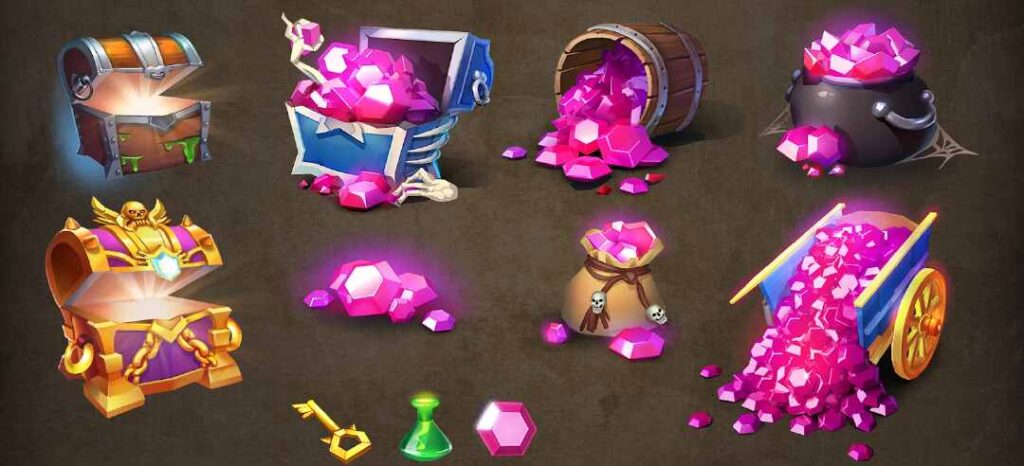
Aside from all of the other factors that contribute to a great video game, it must have an excellent game economy design. What does this phrase actually mean, and what is the role of game economy designers? To have an efficient monetization system in a video game, the game must be balanced in game economy. This procedure entails a precise approach that determines the player’s reward structure, how to keep his interest in the game, and how to persuade him to spend his virtual or real money.
Building a game economy is not a simple process, but we want to show you how you can make this easier for your game because we at retrostylegames.com have a lot of experience doing it correctly.
A game economy designer’s role is to look at the broad picture and use various scientific approaches to correlate the game’s economic connections with real life.
You should consider three key goals while designing a balanced game economy.
- the rate at which players progress in the game.
- the game’s qualities and how they are displayed.
- how players can purchase currency.
Why do you need a robust game economy and design?
You can have the best video game economy in the world, but if the game is dull, players will not play it and will not buy anything. Or you can have a video game with an appealing design and great animation, but if the player doesn’t need to spend anything, can easily complete the levels, and progress rapidly, it’s all for naught. Alternatively, if the game is too challenging, without reward systems, the player will become dissatisfied and abandon the game.
As a result, a well-balanced game economic design is required. The primary goal of the game must be established, as must secondary goals, such as how many days of play are required to achieve level 10 of the game. Balanced and manageable economy must then justify all of the objectives.
How to create a well-balanced game economy design
1. Determine the game’s major statistics
Time is our most valuable resource. Because the purpose is to urge players to spend as much time as possible playing the game, all other metrics in the game are compared and computed depending on time. For example, if a player wishes to advance 5 levels in the rankings, he must play the game for 10 days.
2. Identify the resources
The rate at which a player acquires the game’s principal value is influenced by investing resources. The investment resources have an impact on the player’s development. They must be limited in order to keep the game balanced. For example, the player may receive a boost to assist him in completing the level more quickly, but this must be calculated. If the game becomes too simple, the player may lose interest.
3. Create a system
A mechanism for setting fair prices and determining how much everything in the game is worth is required for a well-balanced game economy design. When a player advances to the next level, he gains in-game currency or access to premium content. He can spend this in-game currency as time passes. For example, after finishing a mission, a player receives 50 coins. But how frequently will he get these coins? When and what may he buy with these? Balanced game economy designer modifies the game’s cost mechanism to achieve a balance between income and expenses.
4. A more intriguing game economies
The good experience of the player stems from the balance of difficult and easy, exciting and uninteresting. The player, like the actual economy, can occasionally have a deficit or a surplus. When the excess grows, so do the prices of goods, such as food, while the quantity of rewards drops. All of these deficits and surpluses elicit emotions from the player, making the game more engaging.
5. Integrate User Feedback and Analytics
We must not proceed to fine-tune an economic design after it has been released based on audience feedback and user behavior. Both provide insights into your game economy design that you would not have gotten otherwise.
Tips for designing a well-balanced game economy
- Recognize the significance of the data. To speak the same language as the rest of the video game development team, everyone must use the same KPIs and data systems. This will aid in the right analysis of the data and figures.
- The game economy designer will understand how to make the proper judgments and what has to be modified for a well-balanced game economy design (for example, he may realize from statistics that the game distributes coins too frequently, which may lower the player’s interest).
- As a game economy designer adjusts and trusts your intuition. Change the game’s balance until it “feels correct” to you.
- Use game testers to determine whether the game’s economy system is balanced and whether there are any flaws in the cost system.
- Change one thing at a time. Do things one at a time to figure out what works and what doesn’t. If an error occurs after you have made a modification, you will understand why. If you make further adjustments, things will become more convoluted, and it will be harder to determine what is causing the mistake.
Final Thoughts
Several game developers have built a balanced in game economy. Many do not understand the fundamentals well enough to commercialize their games. The procedure provided here can serve as a solid starting point for you to construct the economy of your game. However, in order for this to work in your favor, you must conduct extra research, detailed preparation, and proper execution. However, if you wind up building a balanced game economy, you will have a gift that keeps on giving. Furthermore, it will be a revenue-generating asset for many years to come.



